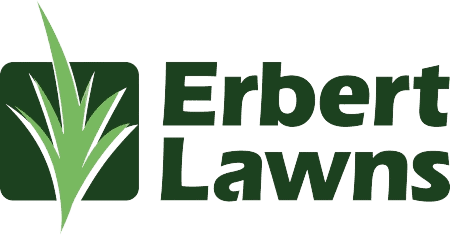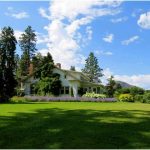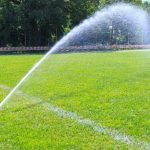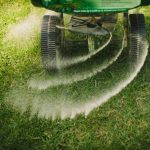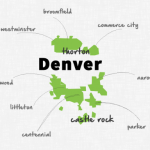By Barbara Powell
Top 3 Lawn Diseases in Denver Colorado
Keeping your lawn green and healthy in Denver, Littleton and surrounding areas calls for preventing, diagnosing and treating common lawn diseases.
Below you’ll find information on avoiding, recognizing and treating the top 3 lawn diseases in the Denver metro area.
1. Leaf Blight and Dollar Spot
Kentucky bluegrass is the most popular type of grass used for Colorado lawns. Leaf blight (known as Ascochyta) and dollar spot (fungus sclerotinia homoeocarpa) have become common problems on our Colorado, Denver and Littleton lawns, so we will discuss those first.
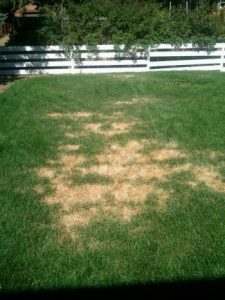
Here are some signs of leaf blight you might see on your lawn:
- Large areas of your normally green lawn will turn straw-colored
- Grass leaves usually start dying from the tips down
- Leaf blight can occur throughout the growing season
- It is more often seen in the spring when there are long periods of moisture
- The first line of defense against Ascochyta leaf blight is to manage the lawn correctly
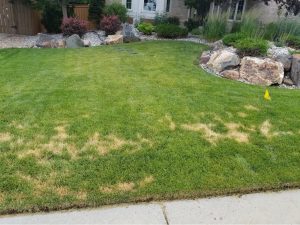
Leaves infected with leaf blight fungus often exhibit straw-color that goes a third to halfway down the leaf blade.
The blades infected with leaf blight do not have the dark brown to purple banding that is characteristic of dollar spot disease. Rather, with leaf blight, the blades are yellow to dark brown. It is one of the most readily identifiable turf diseases. Characteristic symptoms include small round, tan-colored spots. The spots often occur in clusters and can grow together and form larger spots.
Dollar spot-infected grass leaves will display dark brown and purple banding between the healthy part of the blade and the diseased part.
Dollar spot, like leaf blight, hurts leaf tissues without killing roots or tops. This means your lawn can recover on its own, but proper care and maintenance give it the best chance.
These diseases usually occur in late spring and summer. They appear to be enhanced by soil moisture fluctuations, especially drought stress through watering restrictions and poor irrigation systems. However, they may also develop during periods of hot weather preceded by moist conditions from excessive rain or over-irrigation.
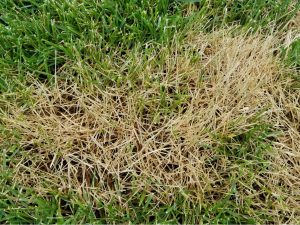
Frequent mowing and dull mower blades may contribute to spreading these fungal diseases. We often see lines of straw-colored grass on lawns, caused by a lawn mower that has spread fungus via its wheels.
Dull lawn mower blades will wound the leaves, and make them more vulnerable to these and other lawn issues.
Prevention and Treatment
To help prevent leaf blight and dollar spots, make sure to check the irrigation system to ensure that sprinkler heads are working properly. To avoid drought stress, excessive irrigation and poor drainage, read our post on lawn watering in the Denver metro area.
Leaf blight and dollar spot are leaf–not root or crown–diseases so they rarely kill the grass plant. Lawns usually recover completely after a couple of weeks. Although several fungicides will inhibit the growth, they can be expensive and difficult to apply.
Both diseases happen sporadically and rapidly, making timing of fungicide applications difficult. Your lawn should recover and re-grow on its own. Be patient. Continue careful preventative maintenance. If the problem persists, consult a lawn care company for professional advice.
2. NRS: Necrotic Ring Spot
Necrotic ring spot (NRS) (called ophiosphaerella korrae) is a fungal disease that occurs in the Kentucky bluegrass used on most Colorado and Denver metro lawns. It shows up as doughnut-shaped patches of dead grass.
It often appears two to three years after your lawn has been established, although it may not develop for a decade or more.
NRS is the most destructive disease of Kentucky bluegrass in Denver and surrounding areas in Colorado. It is particularly damaging to your lawn because it returns every year, and the fungus attacks and kills the roots and crowns. Thus recovery from the disease outbreak is slow.
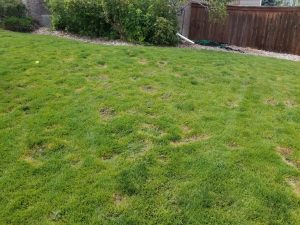
Symptoms of NRS may be apparent throughout the growing season, but they commonly intensify in late July or August during periods of intense summer heat. It starts with lighter green to straw-colored outlines or patches several inches to several feet in diameter.
These rings may be found in only one area of the lawn, or widely scattered across the lawn. As the disease progresses, grass at the edges of the patches starts dying, while the grass inside the ring remains healthy and green. This gives the patches more of an outlined, ring appearance, as opposed to closed patches of diseased grass.
Rings from previous years often develop as bright yellow. This is followed shortly by the death of the grass plants. Patches that develop in shady spots or areas with deep thatch tend to be more severely damaged. The center of the circle may also drop, causing the patches to resemble craters.
After a few years, NRS rings may join together to form larger areas and rings of dead grass.
NRS symptoms will continue into early September but the lawn may recover during late fall and the following spring to the point where the rings are no longer visible. But because it is perennial (returning every year), NRS may reappear and intensify in mid-summer in successive years.
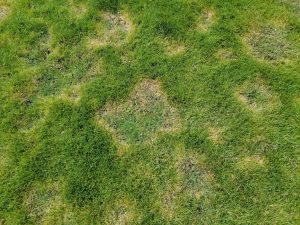
Prevention and Treatment
- Prepare before sodding or seeding. NRS is made worse by compacted soils and poor soil drainage. Prepare the soil before you attempt to establish your lawn. Make sure the site is adequately drained.
- Resistance. Some types of Kentucky bluegrass have been found to be resistant to NRS in limited trials. Seeded lawns tend to have fewer NRS issues than sodded lawns.
- Overseed diseased patches.
- Don’t overwater. This is perhaps the most important management practice for NRS.
- Perform regular maintenance and upkeep on established lawns.
- Do not overdo nitrogen fertilizer. More than 4 pounds of total nitrogen per 1000 square feet per year may actually encourage and make NRS worse.
- Sulfur amendments. Sulfur amendments can reduce NRS damage.
- Fungicide. Best left to experts, as it’s difficult to apply this properly without professional equipment.
3. Winter Mites
After a long winter, you may think your grass is coming back just fine. But you are still seeing brown, dead patches on your Colorado lawn. It could be winter mites. Homeowners often mistake them for normal seasonal changes in the lawn. Winter mites are active year-round, but it’s likely you won’t notice them until the weather turns cold and their young hatch and start eating your grass.
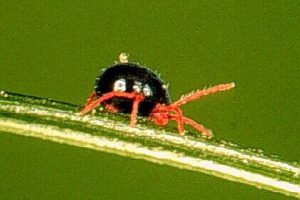
Though they’re hard to see, a simple magnifying glass will allow you to examine your lawn for them yourself. Spring is the best time of year to look for winter mites. Spring is the season during which they lay eggs in Colorado and Denver metro lawns.
Look at the bases of grass leaves for tiny black spots. Look for shiny bodies and orange legs. If you find them, you probably have winter mites. And if you found them during the spring and summer months, you may be able to mitigate damage before winter hatching season, with some professional pest control.
Fall is your last chance to attempt to wipe them out, before their eggs hatch and the cycle begins again.
To complicate things, their eggs incubate during the warm months and hatch during the cold months. Despite this, winter mites actually thrive in humid and warm winters. Cold Colorado winters do slow them down, but it doesn’t stop them from hatching and starting to eat (your lawn).
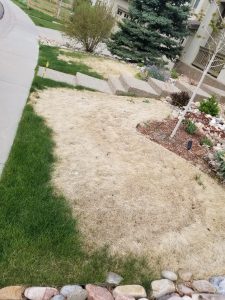
Prevention and Treatment
Mites can’t live in conditions that are very moist. Watering your lawn during dry spells will help keep their numbers down.
Water even in winter, but not when the temperature is under 40 degrees. Allow enough time for the water to fully soak into the lawn. And, need we say it, DO NOT water your lawn in below freezing temperatures.
When watering, pay attention to the areas around trees and sloped areas, as well as south and west facing areas of your lawn. Any part of your lawn that dries out quickly will need to be kept moist. Constant moisture discourages winter mites.
You may want to hire a lawn service that will look after this issue over the winter months. They can also apply the right pesticides at the right time of year to solve your winter mite problem.
Sources include: Colorado State University Extension
At Erbert Lawns we provide lawn care services in the Denver metro area including the following suburbs: Littleton, Roxborough, Castle Rock, Highlands Ranch, Englewood, Centennial, Parker, Aurora, Commerce City, and Thornton Colorado. We offer the following lawn services: Fertilization and Weed Control, Aeration, Weed Kill in the Rock & Mulch Beds, Aeration with Over Seeding, Revive, Lawn Disease Treatments, Perimeter Pest Control and Winter Mite Treatments.
Want to see about how much it cost to have professional lawn care for you home? Just click on the link below.
